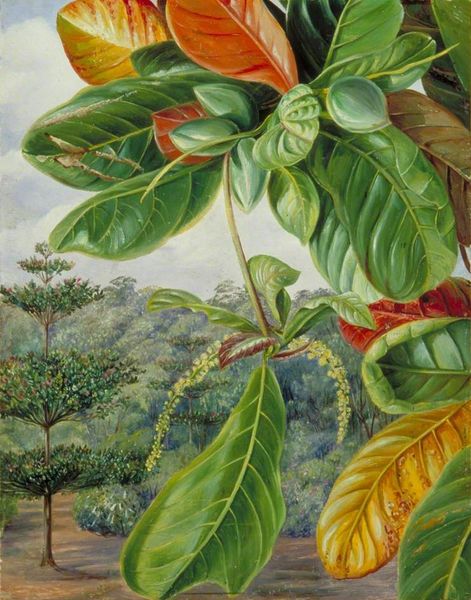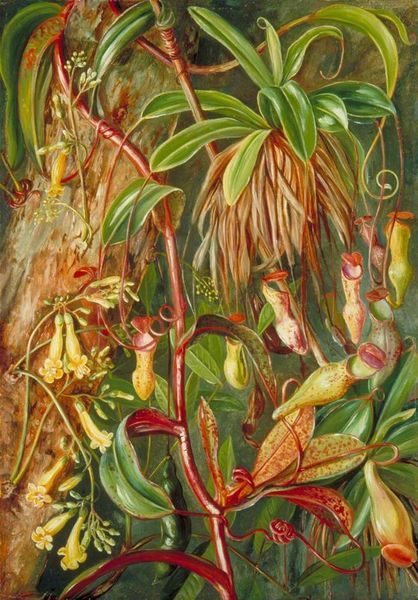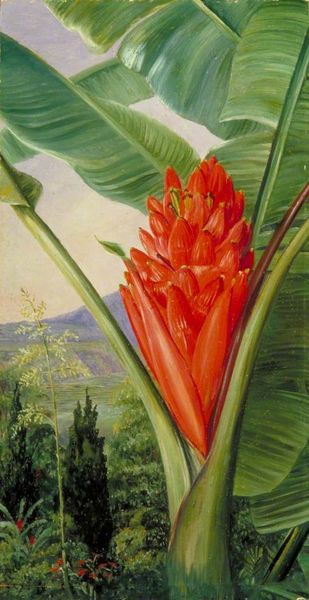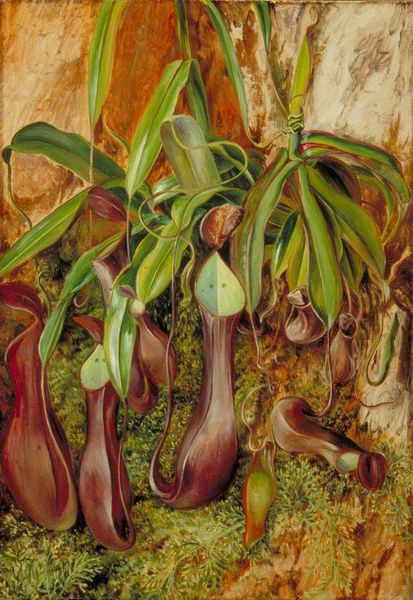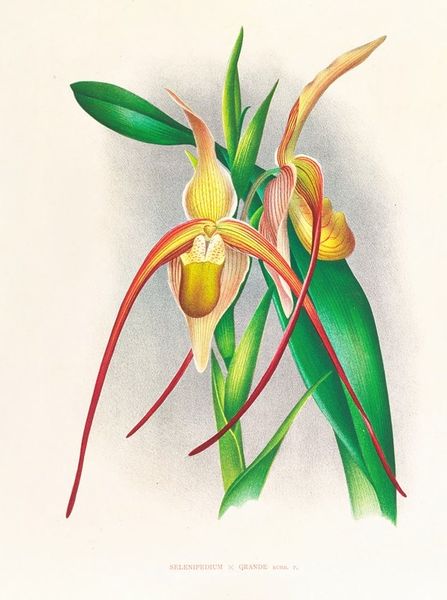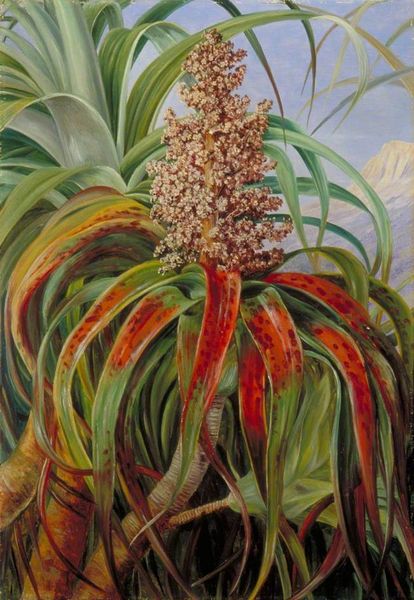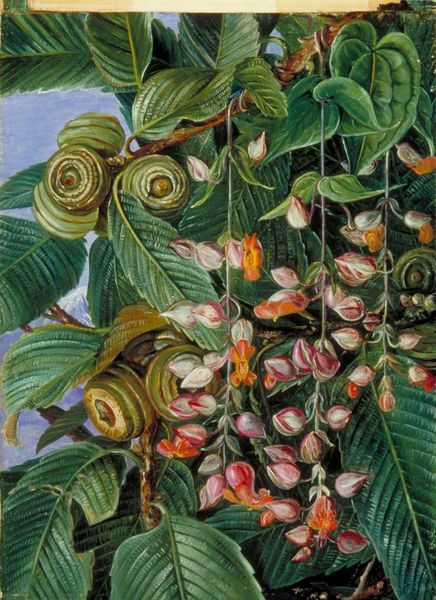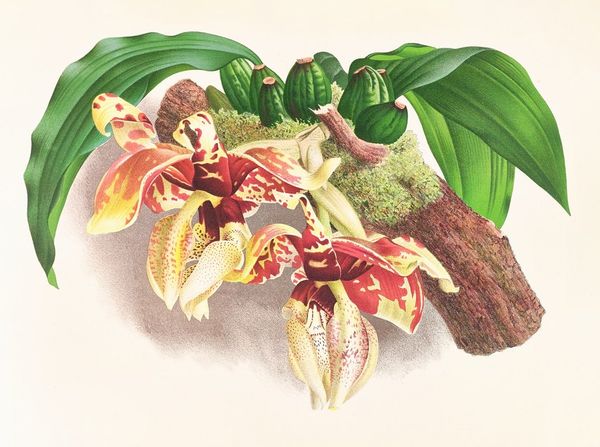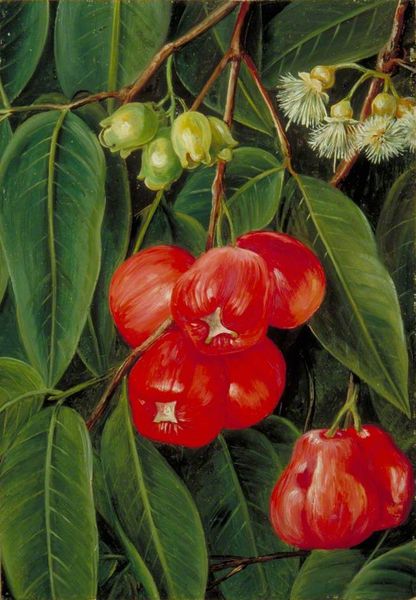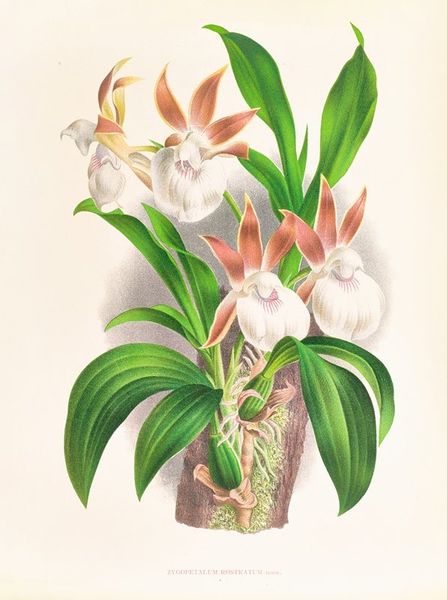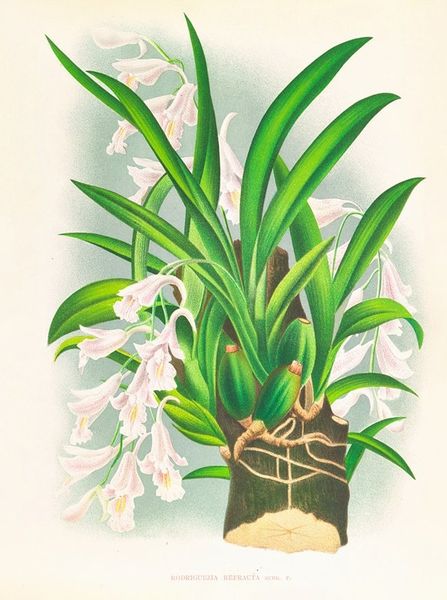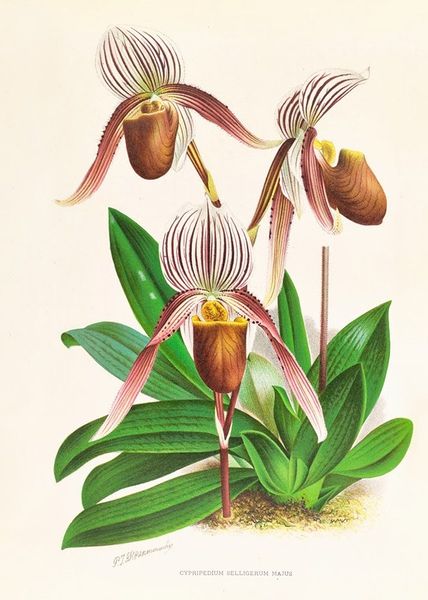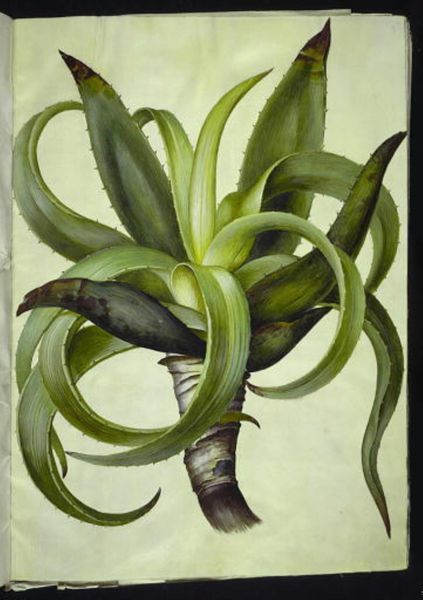
painting, oil-paint
#
painting
#
oil-paint
#
landscape
#
oil painting
#
orientalism
#
naturalism
#
realism
Copyright: Public domain
Curator: Look at this oil painting, "A Mangrove Swamp in Sarawak, Borneo" created in 1876 by Marianne North. What strikes you most? Editor: The initial feeling is of oppressive humidity. The colors are vivid, saturated, almost unnervingly so. There’s an intensity to the green that feels both alive and, frankly, a bit claustrophobic. I wonder about North’s motivations, situating herself within such a challenging landscape. Curator: North was quite the intrepid traveler for the time. It's important to remember the context: this work emerges from an era of exploration and colonial expansion, but also nascent scientific inquiry into the natural world. How do you think these historical forces influenced the production and the viewing of such landscapes? Editor: Absolutely. On one level, the painting is documentary, fitting into a tradition of naturalism. Yet, as a woman traveling and painting, her perspective is already a subversion of typically masculine explorations. I am curious about her agency as a Victorian woman within such a framework and its reception by the Victorian art establishment. Did her gender shape the perception of her botanical work? Curator: It’s a good question. Gender unquestionably shaped perceptions. The very act of a woman engaging in scientific observation and artistic representation was often fraught. Returning to the painting itself, note how the details are rendered with almost photographic accuracy. Yet, it's not merely a visual record, it's a crafted image – selected, framed, presented. Editor: And within that framing, it’s difficult to ignore the inherent power dynamics. Who gets to represent this landscape, for whom, and to what ends? What of the Indigenous knowledge that predates North's observation? Perhaps unpacking that tension opens space for decolonial understandings of the nature that surrounds us. Curator: That’s precisely where art can intersect with history, unveiling those layers. Even now, observing these vibrant greens invites contemplation. North’s mangrove calls not only to witness its physical reality but the multifaceted politics of its image and its history of witness. Editor: Yes. Seeing her encounter across all those years truly underscores just how potent art remains as a lens to view culture, the times, and their lasting impact.
Comments
No comments
Be the first to comment and join the conversation on the ultimate creative platform.
